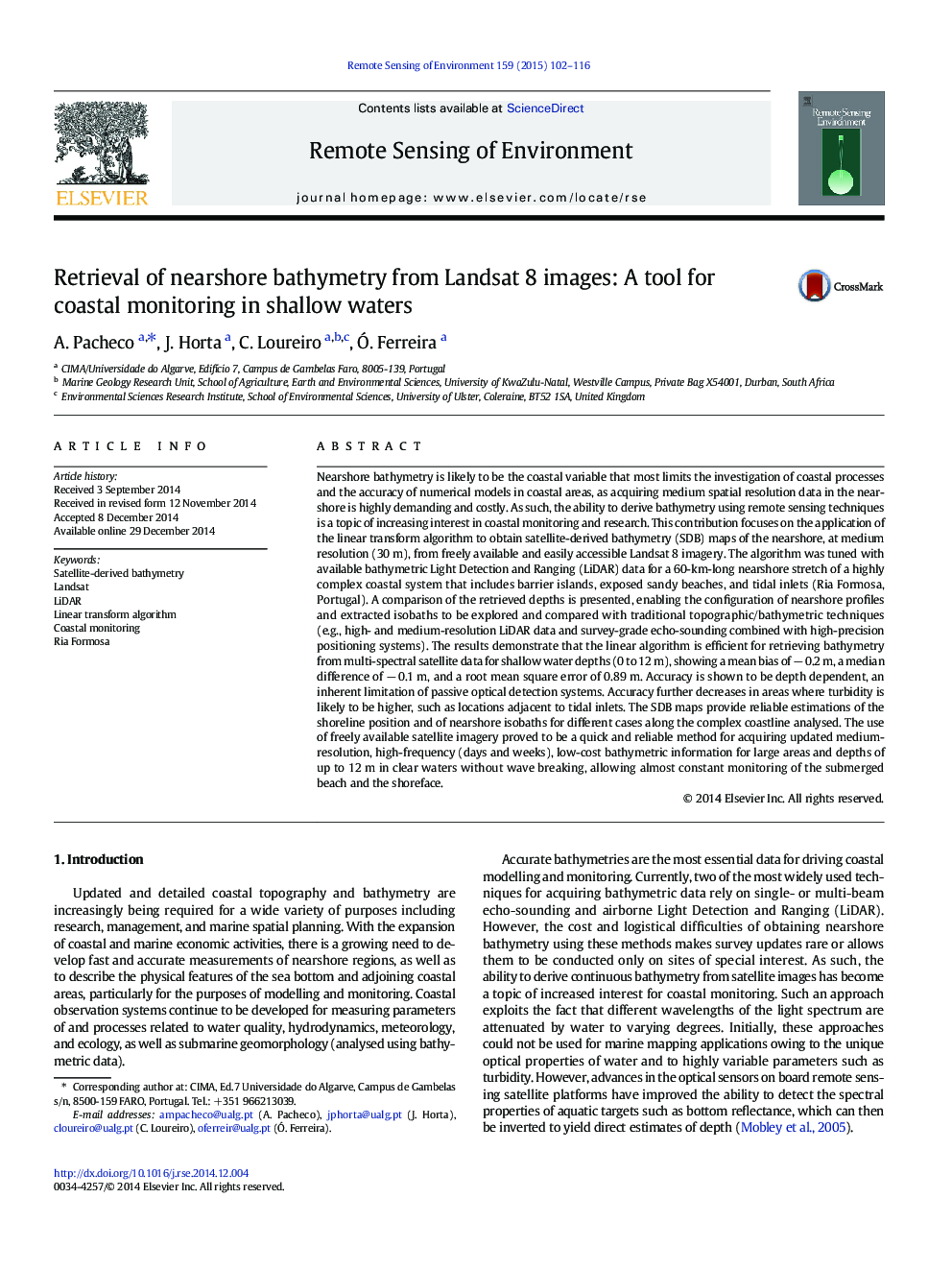| کد مقاله | کد نشریه | سال انتشار | مقاله انگلیسی | نسخه تمام متن |
|---|---|---|---|---|
| 6346171 | 1621241 | 2015 | 15 صفحه PDF | دانلود رایگان |

- SDB maps are derived from Landsat 8 imagery using a linear transform algorithm.
- The algorithm was tuned with LiDAR data from a highly complex coastal system.
- SDB profiles/isobaths are compared with those derived from bathymetric techniques.
- SDB maps are acquired with a bias of â 0.2 m and a root mean square error of 0.89 m.
- SDB maps can provide estimations of shoreline position and nearshore isobaths.
Nearshore bathymetry is likely to be the coastal variable that most limits the investigation of coastal processes and the accuracy of numerical models in coastal areas, as acquiring medium spatial resolution data in the nearshore is highly demanding and costly. As such, the ability to derive bathymetry using remote sensing techniques is a topic of increasing interest in coastal monitoring and research. This contribution focuses on the application of the linear transform algorithm to obtain satellite-derived bathymetry (SDB) maps of the nearshore, at medium resolution (30 m), from freely available and easily accessible Landsat 8 imagery. The algorithm was tuned with available bathymetric Light Detection and Ranging (LiDAR) data for a 60-km-long nearshore stretch of a highly complex coastal system that includes barrier islands, exposed sandy beaches, and tidal inlets (Ria Formosa, Portugal). A comparison of the retrieved depths is presented, enabling the configuration of nearshore profiles and extracted isobaths to be explored and compared with traditional topographic/bathymetric techniques (e.g., high- and medium-resolution LiDAR data and survey-grade echo-sounding combined with high-precision positioning systems). The results demonstrate that the linear algorithm is efficient for retrieving bathymetry from multi-spectral satellite data for shallow water depths (0 to 12 m), showing a mean bias of â 0.2 m, a median difference of â 0.1 m, and a root mean square error of 0.89 m. Accuracy is shown to be depth dependent, an inherent limitation of passive optical detection systems. Accuracy further decreases in areas where turbidity is likely to be higher, such as locations adjacent to tidal inlets. The SDB maps provide reliable estimations of the shoreline position and of nearshore isobaths for different cases along the complex coastline analysed. The use of freely available satellite imagery proved to be a quick and reliable method for acquiring updated medium-resolution, high-frequency (days and weeks), low-cost bathymetric information for large areas and depths of up to 12 m in clear waters without wave breaking, allowing almost constant monitoring of the submerged beach and the shoreface.
Journal: Remote Sensing of Environment - Volume 159, 15 March 2015, Pages 102-116